Driven initially by his passion for motor racing, Colin Chapman would have had no idea of the enormous impact that he and the brand he created, would have on the automotive world.
Starting out as a 'David' in the automotive world, Lotus would defy the 'Goliaths' and become highly influential in both the international racing scene and the design and production of road cars; well beyond what could have been imagined by the young Chapman.
Over more than 60 years in the making, Lotus has become both a class-leading manufacturer of sports cars and a globally respected automotive engineering consultancy, working with many of the world's most prestigious car manufacturers.
From humble beginnings, when Chapman built his first trials car in a lock-up in 1948, motorsport was the driving force; indeed it was Chapman's desire to create competitive race cars that drove him to produce road cars in order to finance his racing ambitions! The motorsport influence has continued throughout the company's evolution and led to a continuous thread of innovation and pioneering firsts. The link between Lotus race cars and road cars is a critical and powerful one.
It was obviously a winning tactic, because the racing team Chapman formed, Team Lotus, went on to win seven Formula One Constructors' Championships and six Drivers' Championship titles, and a string of other titles and conquests.
The motorsport heritage remains at the heart of Lotus today and the strategic link to developing cars which offer superlative handling and performance for driving on the race track or on the road.
Team Lotus – some key milestones
- 7 F1 Constructors Championships
- 6 F1 Driver's Championships
- 1 Indianapolis 500 win
- 3 Class wins at Le Mans
- 1 World Rally Championship
Driven by some of the world's most famous drivers including: Stirling Moss, John Surtees, Ronnie Peterson, Nigel Mansell, Ayrton Senna, Jochen Rindt, Nelson Piquet, Graham Hill, Emerson Fittipaldi, Jim Clark, Mario Andretti to name but a few…
1954 Team Lotus is set up
The team comes into being. With the Mark 8, with which they could enter international motor racing, they become an overnight success. On the racing scene, Chapman's tendency to seek out loopholes in the regulations and to innovate begins, and this will later lead him to become known as both a maverick and a genius.
1955 Early production
The Mark 6 was much in demand, but after the manufacture of over 100 cars, orders for the pure sports racing cars took priority. Chapman gave up his job to become fully employed with the production of Lotus cars at the Hornsey factory. The Mark 8 became even more popular and Lotus was pressed for supply in both the larger and smaller engine capacities.
The company went on to develop the very agile Mark 9 and the more powerful Mark 10, and was accepted by the Society of Motor Manufacturers and Traders as a member, allowing them to display their cars at the Earls Court Motor Show for the first time.
1956 The Lotus Eleven
After a busy 1955, Chapman decided to focus development for the ensuing year on one basic model. Developed as a descendant of the Mark 9, the Lotus Eleven (Chapman's new chosen name and the start of the Lotus 'E' name tradition) comes in three basic models to suit varying customer requirements. From hereon the models are referred as types rather than marks.
1957 Lotus Seven & Le Mans
The Lotus Seven was launched as a 'no-frills' sports car. The car was available as a fully built car or as a kit, and delivered exceptional performance at a relatively low cost.
Production of the Seven continued at Lotus until 1973, when the rights were passed to Caterham, who still produce a form of the car today.
At the Earls Court Motor Show the Type 14 Elite (the number 13 was not used as it is considered unlucky) was shown for the first time to great acclaim. This fixed head coupe is still considered by many to be one of the best proportioned cars ever built. This was the FIRST Lotus to carry a glass fibre composite body that also acted as the chassis.
Also in 1957 the Eleven proved highly successful on the race track, and achieved a historic win in the 750cc Class of the Index of Performance at Le Mans.
1958 Group Lotus PLC
This is the year Chapman established Group Lotus.
Despite having been designed for Formula 2, the performance of the Lotus 12 meant that it became the FIRST Lotus to enter Formula 1 managing a highly credible fourth place at Spa.
The Type 15 (based on the Eleven), and Type 16 Formula 1 and 2 racing cars were developed. As one of the FIRST engineering consultancy roles, Chapman also had a hand in developing the Vanwall Grand Prix car for Tony Vandervell; the car going on to win the 1958 Constructors Championship.
1959 The move to Cheshunt
The factory moves from the original showroom next door to the Railway Inn on Tottenham Lane, Hornsey on the outskirts of London, to a new purpose-built facility at Cheshunt.
Following the great success of the Lotus Eleven, a new small capacity sports racer labelled the Type 17, was developed. This extremely lightweight car weighed just 341 kg, but this innovation proved not to be successful on track and Chapman was forced to go back to the drawing board.
1960 The mid-engine principle and Lotus' first GP win
Focused on winning, Chapman adopted and improved upon the mid-engined layout of the successful Cooper race cars. A much simpler car than the Type 16, The Type 18 was so competitive in both Formula 1 and 2 that it was emulated by the majority of cars in those formulae. Racing with the Type 18 in Monte Carlo, Stirling Moss drove to victory at the first of many championship Grand Prix wins as driver for the Rob Walker team.
Chapman said he regarded the Type 18 as the first true Formula 1 car he had designed and built, his previous front-engined efforts being merely dabbling.
The Type 19 large capacity sports racer was developed from the basis of the Type 18 and went on to dominate its class in the USA.
1961 The Lotus 20 & 21
Keen to maintain Lotus' pre-eminence in Junior racing, Chapman developed the Type 20. Using the majority of parts from the Type 18 packed into a smaller body, the Type 20 mades an immediate impression on the track.
1st Demonstrating the typical 'can do' attitude of Team Lotus, in only 6 weeks the Type 21 was designed and built to compete in the 1961 Formula One season. The Type 21 was the FIRST F1 car to use a reclining driving position. It was also the FIRST Team Lotus car to win a world Championship Grand Prix, with Innes Ireland taking first place at Watkins Glen, USA.
1962 One road car and four racers
Lotus introduced the Type 24 with a conventional chassis at the start of the '62 Formula One season, but it was soon eclipsed by the radical Type 25.
1st Abandoning all the existing conventions, the 25 was the first F1 car to use a revolutionary fully stressed 'monocoque' chassis design, reinforcing Chapman's reputation as a brilliant engineer. Winning four Formula 1 races in its first year, at the hands of the talented Jim Clark, just missing out on the Championship in the final race.
The Type 26 Lotus Elan was introduced and rapidly became a class leader by which other sportscars were measured. The car continued in production for 11 years due to it's excellent design and subsequent popularity.
1963 The year of the Cortina and F1 success
Chapman developed his first Indianapolis car, the Type 29. With a power to weight ratio of over 800bhp per ton Lotus proclaimed it to be one of the most, if not the most potent piece of racing machinery ever built. After leading the Indy 500 for 28 laps, Jim Clark finished in second place.
Lotus assisted Ford in winning the British Saloon Car Championship by developing and building the Type 28 Lotus Cortina.
Win: With Jim Clark at the wheel of the Type 25, Lotus secured its FIRST Formula One Constructors' Championship, and the Drivers title; this was also the first Drivers' World Championship for Clark, winning seven out of ten races. Both titles were won with an astonishing maximum points.
1964 The Type 33
Lotus developed the Type 30, their first car designed for Group 7 racing.
The Type 31, 32, and 33 were developed. These new cars were built for Formula 3, 2 and Tasman, and 1 respectively. The Type 33 was an evolution of the monocoque structure Type 25.
1965 More F1 Success and Indy 500
Win: Again the brilliant Jim Clark brought home another double for Team Lotus, winning both constructors' and drivers F1 championships, this time at the wheel of the Type 33.
Clark also won the famous Indy 500 race in the USA in the new Type 38 having lead virtually from the start, averaging 150.686mph – a new record.
On the road, the Type 36 Lotus Elan fixed head coupe made its debut, the first 'luxury' Lotus Coupe.
After the idea of racing the Type 7 with independent rear suspension became popular, Lotus developed the semi-official Type Three-7. This project was conceived as the new generation Clubman's racer for the 1965 season.
1966 Move to Hethel, Norfolk.
It was in this year that Lotus moved to a purpose-built factory based in Hethel, Norfolk. Built on a former US Air Force base, covering 55 acres, the old runways were converted into a 2.5 mile test track which, over the years, saw the inaugural drives of some of the worlds's finest road and race cars at the hands of some of the world's most famous racing drivers.
The enhanced Type 45 Elan S3 drophead made its debut, followed by the mid-engined Europa (Type 46) road car, whose handling received considerable praise in the press. Soon after the Europa went into production, work began on the Type 47, a Cosworth-Ford powered racing version. Jim Clark went on to be placed 2nd in the Indy 500 despite suffering from handling problems with the Type 47.
1st The Type 43 made its debut at Reims. It was the first F1 car to use the engine as a structural member. However, the car suffered from problems with the BRM H16 engine, with only one F1 win at Watkins Glen in the USA.
1967 The legendary Cosworth-Ford DFV V8
The Type 49 Formula 1 racer became the FIRST car to be powered by the legendary Cosworth-Ford DFV V8 engine, a motor which went on to dominate the Formula 1 scene for over a decade. Jim Clark won the Dutch Grand Prix in the 49, and took pole position In the following 11 Grand Prix races.
The more spacious Type 50 Elan +2 went into production, with a longer chassis and different bodywork, enabling two children to be carried in the rear seats.
1968 The loss of Jim ClarkTragedy: 1968 proved to be a tragic year for Team Lotus. They were to lose the heroic and talented Jim Clark in a Formula 2 race at Hockenheim on 7th April. The racing world were devastated. The black badge was introduced onto Lotus cars leaving the factory
following his death as a sign
of respect.
Win: Graham Hill drove to victory winning the Constructors' and Drivers' titles for Lotus again.
Double 1st This is the year when Chapman, ever the keen business man, introduced commercial sponsorship onto the Formula One scene, and the Type 49 debuts the famous Gold Leaf livery of red, white and gold.
The 49 was also the FIRST use of Aerofoil wings in F1.
Lotus also launched the S2 Europa.
1969 The Seven S4 & Lotus' entry into US market
The new Seven S4 began production. Vastly different from its predecessor, the S4 was designed to be sold to a much wider public through an all-new dealer network. The Seven S4 is designated Type 60 and used a chassis fabricated from tubular steel with welded steel sides.
Following Europa's success in the UK, Chapman decided to market the car in the US, meaning the car had to meet federal standards.
1st The Type 63 became the first F1 car to use the wedge shaped front.
1970 The Elan Sprint and more F1 wins
In the January the famous Elan Sprint was introduced with the new 126bhp 'Big Valve' engine.
Double 1st Team Lotus unveils the innovative Type 72 Formula One Car that went on to achieve twenty Grand Prix wins. With inboard brakes, torsion bar springs and the FIRST use of mid-mounted, side radiators it was possible to create a car with a flat aerodynamic nose. It was also the FIRST car to use a multi element rear wing.
Win: Austrian driver Jochen Rindt passed Jack Brabham on the last lap to win the 1970 British GP at Brands Hatch in the new Type 72. Victory came again in both the Constructors' and Drivers' championships. Tragedy: Rindt is tragically killed at Monza before the season's end.
1971 A new engine
Europa went on to realise it's full potential with a change of engine and improvements to the handling, cabin space and styling. It became one of the world's quickest production sports cars.
The Type 907 road engine was developed by Lotus and sold to Jensen for use in the Jensen-Healey.
1972 The Lotus Type 72
Win: Another successful year for Team Lotus. In the Type 72, now sporting the famous John Player Special livery, Emerson Fittipaldi won both Constructors' and Drivers' Championship.
The success of Team Lotus was reflected in the black and gold (JPS) colour scheme available for the newly announced Europa Special.
The Lotus Esprit concept, designed by Ital Design, is shown for the first time.
1973 The 'Texaco Star'
Lotus causes confusion by naming its next race car the Type 74, a type number already given to the Europa. However, due to the sponsorship scheme on the car, the car becomes more commonly known as the 'Texaco Star'.
Win: Lotus won the Constructors Championship for the sixth time, and Emerson Fittipaldi comes second in the Drivers' Championship with Ronnie Peterson coming third.
1974 The Lotus 2+2 Elite
Lotus' first 4 seater car was launched, the attractively shaped Type 75 Elite. Though more luxurious than any previous Lotus, the Elite still uses the company's trademark backbone chassis and is very much a sports car.The Elite's glass fibre composite body used a Vacuum-Assisted Resin Injection (VARI) technology, demonstrating Chapman's ceaseless search for technical innovation, and the transfer of knowledge from pit-lane to production.
This year also saw the construction of the Type 76 Formula One car dubbed the John Player Special Mark 1.
1975 Accolade of Awards
An important year for Lotus. The Elite was awarded the DON Safety Trophy by the UK Minister of Transport: The citation reads:
'The panel felt the successful use of GRP body construction plus the wide margin by which the Elite meets the US and European Legal Safety Requirements, and the emphasis placed on the reduction of the risk of fire in the case of collision, allied to the good fuel economy and low emission of pollutants, added up to a substantial improvement of both primary and secondary safety in a high performance car'.




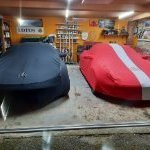
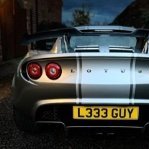

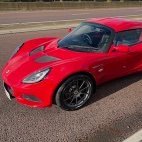

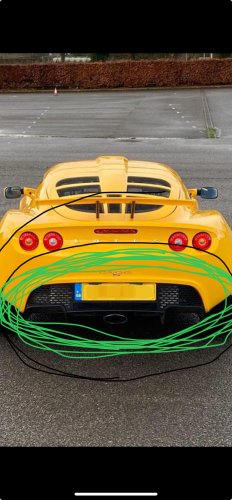
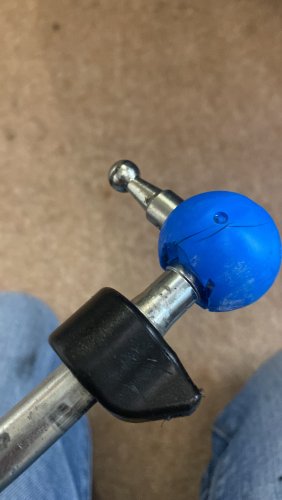
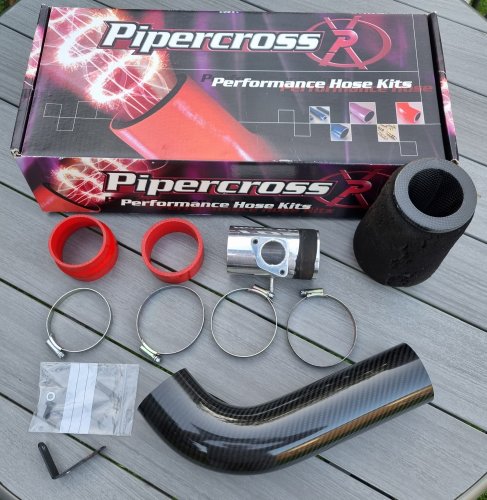
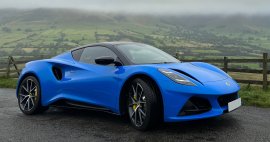
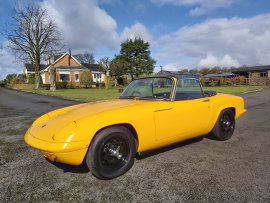


Recommended Comments
There are no comments to display.
Join the conversation
You can post now and register later. If you have an account, sign in now to post with your account.